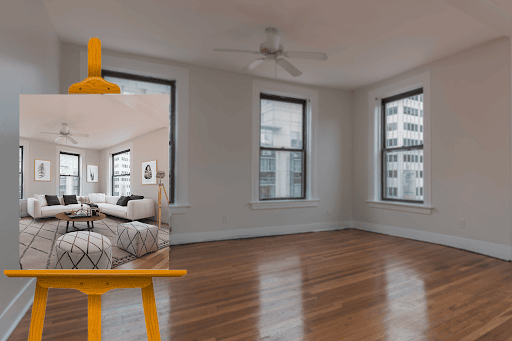The Complete Guide to Selling a Vacant House for the Max Value
Most homebuyers scroll through listings and hope to find a house that stands out as their next home. Unfortunately, vacant houses don't exactly have that impact. In fact, a recent study showed that vacant properties tend to sell for an average of $11,306 less and spend six extra days on the market than comparable occupied homes.
Even if the listing is in great condition, empty rooms don't naturally appeal to buyers. It prevents them from building an emotional connection to the property, and they often can't even understand the size and scale of the home from pictures. The reality is that there are more obstacles to overcome to sell a vacant house--but it is possible with the right tools and strategies.
Here's what we're about to cover:
- Pros & cons of selling vacant houses
- Know the local real estate market
- Invest in security
- Maintain the home
- Prioritize curb appeal
- Stage the home
- Market & advertise the listing
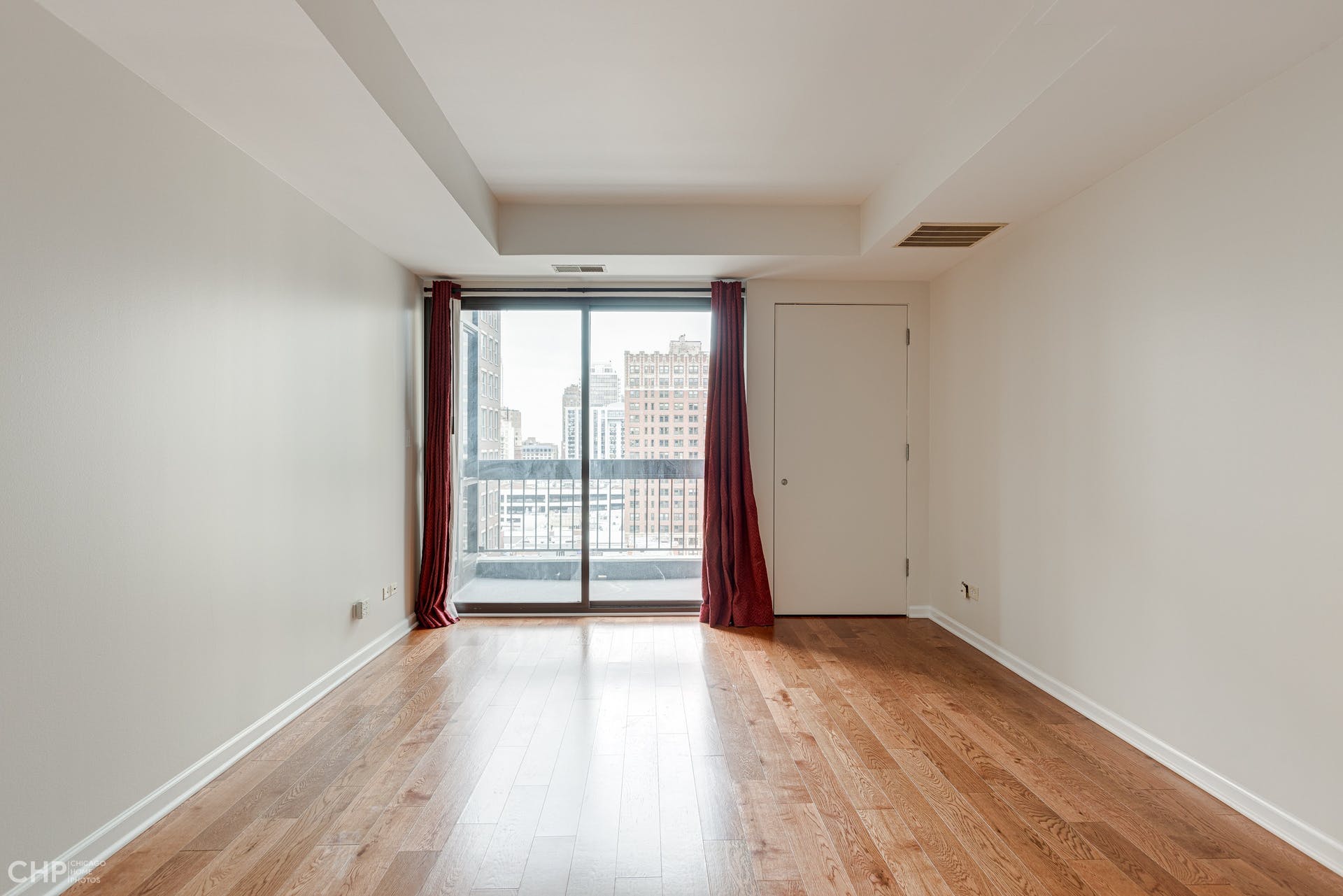
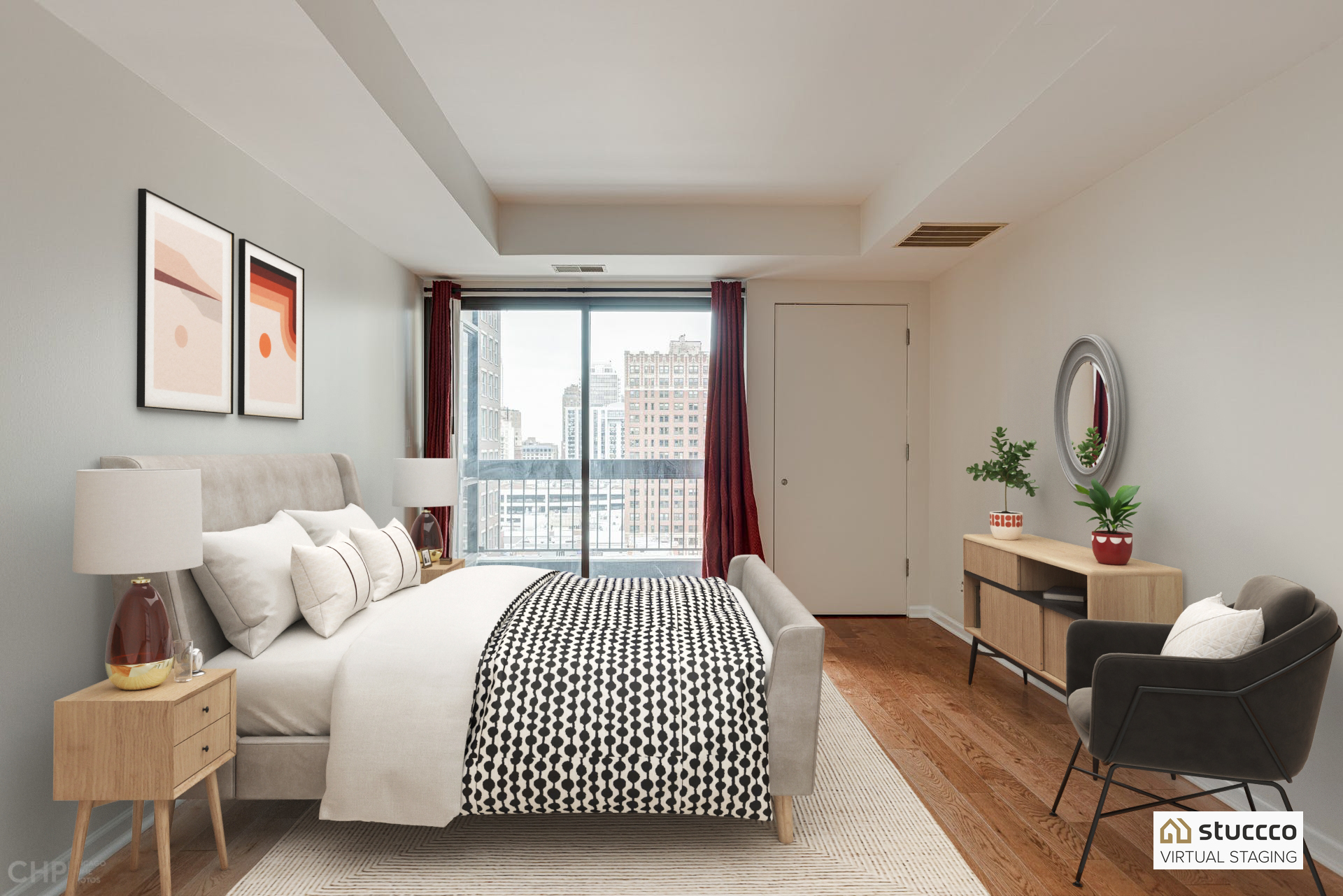
Stuccco virtual staging
Pros & Cons of Selling Vacant Houses
While there are undeniable obstacles to overcome, there are also many perks to selling a vacant home. An empty interior is far more convenient for real estate agents and FSBO (for sale by owner) home sellers.
For instance, scheduling showings isn't dependent on the sellers' availability (or their ability to keep the house clean), allowing for much more flexibility. There are essentially no tasks that the homeowners need to tackle between getting an offer and closing, which opens up the opportunity for faster, easier, and smoother transactions.
Plus, a home is vacant simply because it is a new build, which can be highly desirable. An empty home can also be treated as a blank canvas, which can appeal to home buyers and simplify the staging and marketing process.
However, it's more common for vacant houses to be empty because the homeowners have already left (sometimes with a significant time gap) or because the home was previously a rental property. In these cases, the property might be in less-than-ideal condition, and there are additional security concerns when a home is clearly not occupied.
Another potential obstacle is that current homeowners may not have the time or resources to make improvements or repairs before the home sale.
By far the biggest obstacle to vacant home sales is the buyer's perspective. The majority of homebuyers already struggle to envision an occupied home as their own--it's even more difficult when they can't grasp the room's layout or feel without furniture.
Most buyers find that overwhelming and confusing--which makes a huge difference when it comes to doesn't lead to the best offers.
But don't give up hope yet! There are a few different ways to help homebuyers view the house very differently and to sell any home for the most money.
6 Steps to Sell a Vacant House
1. Know Your Local Real Estate Market (or Work with a Professional)
If you're a home owner looking to sell your property, it's even more important to follow the steps listed here. However, you should know that getting the maximum value out of your home without the expertise, connections, and marketing tools of an agent is extremely difficult.
It might be appealing to get all of your profits (without losing anything to commissions)--but studies actually show that FSBO home sell for about 19% less. Along with having the additional obstacles that come with an empty house, you might actually earn much less.
Regardless, knowing your local housing market and current home trends will be absolutely essential to preparing, listing, and marketing the home.
The best real estate agents constantly have their finger on the pulse of what buyers want in a home, from design styles to landscaping to interior features. When you know what is most important to local buyers, you highlight those features more clearly and increase the home's overall appeal.
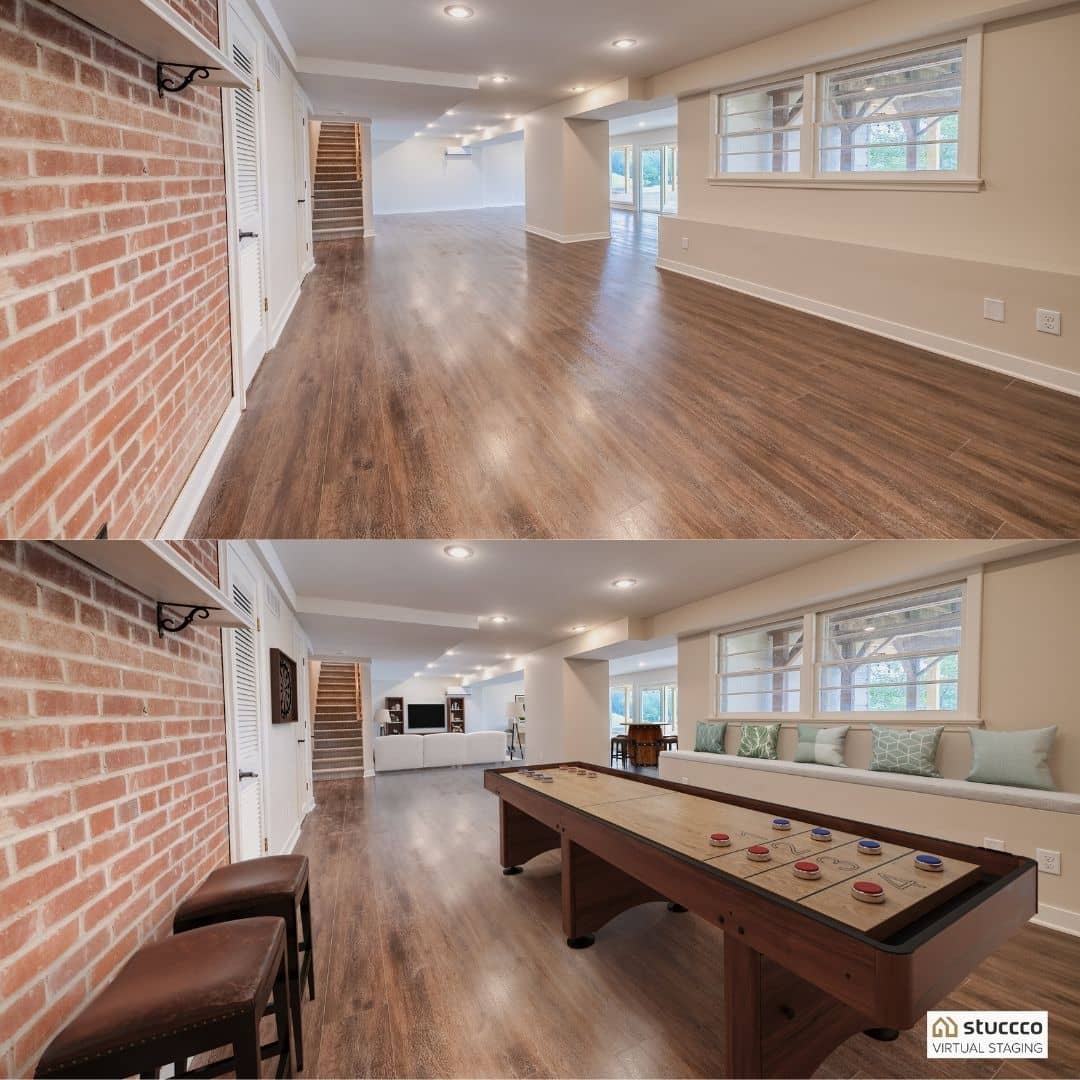
Virtually staged recreation area
2. Invest in Security
There are numerous studies about how vacancies attract potential criminals. An empty house is basically an easy target for them--especially if there isn't already a clear security system in place.
You can implement home's security with:
- Neighborhood Watch: One of the easiest, and cheapest, options is to simply alert the neighbors. If they notice something strange happening at the property they can easily call or text you or the seller.
- Outdoor Lighting: Another fairly simple option is to install motion-activated floodlights. A burglar creeping up to the door at night might be easily scared off by a sudden light.
- Security Technology: There is a wide selection of security solutions that are relatively easy to install. Although they can require a financial investment, combining ideo doorbells and smart locks are a few of the best ways to deter potential theft. Plus, security systems will increase the overall value of the home.
3. Maintain the Home
Vacant homes tend to look unkempt after just a few weeks when they aren't intentionally maintained. Keeping the property maintained, even in small ways, is absolutely necessary for real estate agents wanting the house to sell quickly and at the highest possible price.
Simple home maintenance can prevent criminals from even realizing that it is a vacant property. Plus, small maintenance tasks automatically make the home more appealing to prospective buyers. After all, buyers won't pay top-dollar for a dirty house that they just see as a project.
Home maintenance doesn't have to be overwhelming, but it should include these basic tasks:
- Get the mail: Overflowing mail boxes are a dead giveaway that nobody is currently living in the house.
- Keep the lights on: Not only are dark houses a security risk, they are also not appealing to home buyers. In fact, driving by a completely dark house in the evening can be downright creepy.
- Declutter: Clear out both the inside and outside of the home. The outside is the home's first impression, and anything items left behind in an empty exterior will feel very awkward to potential buyers.
- Manage the thermostat: When it't time to prepare for your open house or schedule showings, make sure the home is comfortable temperature for visitors.
- Schedule regular cleanings: Whether the cleaning is done by the homeowner or a service, it needs to be done regularly to avoid dusty surfaces or muddy floors.
4. Prioritize Curb Appeal
In an ideal world, the owners of the vacant house would be able to do every single renovation or home upgrade that you suggest. In most cases, there is a very limited amount that they may be willing or able to--especially if they've already moved away from the property.
If you have to choose from a long list of potential home repairs, move curb appeal up to the top. The outside of the home is the first thing buyers see, whether it's online or in person, and first impressions are everything.
Some basic landscaping can have a huge impact on the curb appeal of a house without costing an arm and a leg. Talk to the seller about hiring a regular lawn care service, laying down fresh mulch, and adding some bright flowerpots around the front of the house.
If the house itself is looking a little tired, a great way to freshen it up without a total renovation is to repaint the front door and shutters. This easy facelift will elevate the property and make it far more desirable to buyers.

Virtually staged patio
Focusing on the curb appeal is basically the first step of home staging. For even more unique ideas, read our top outdoor staging ideas.
5. Stage the Home
Staging is hands down the most powerful method of selling a vacant house for the absolute highest value. Home staging statistics clearly show that it can massively increase the perceived value of the home. For example, 85% of staged homes sell for over the asking price, AND they sell up to 88% faster.
It's important to note that vacant homes don't sell for less simply because of their empty interior. As we've discussed, having the homeowners out of the house can actually make the selling process easier.
The real reason that vacant homes don't sell for as much money is because of the lack of emotional connection. Some real estate agents don't realize the true impact that the right staging can have a space.
Professional staging is not simply adding furniture to an empty house. It's a highly specific method of optimizing a home for the real estate market with a strategic design style and furniture layout.
Of course, the other problem is that many agents and homeowners don't have thousands of dollars to spend on traditional staging. However, virtual staging is only a fraction of the cost, can be done in 24 hours or less, and provides the same incredible results.
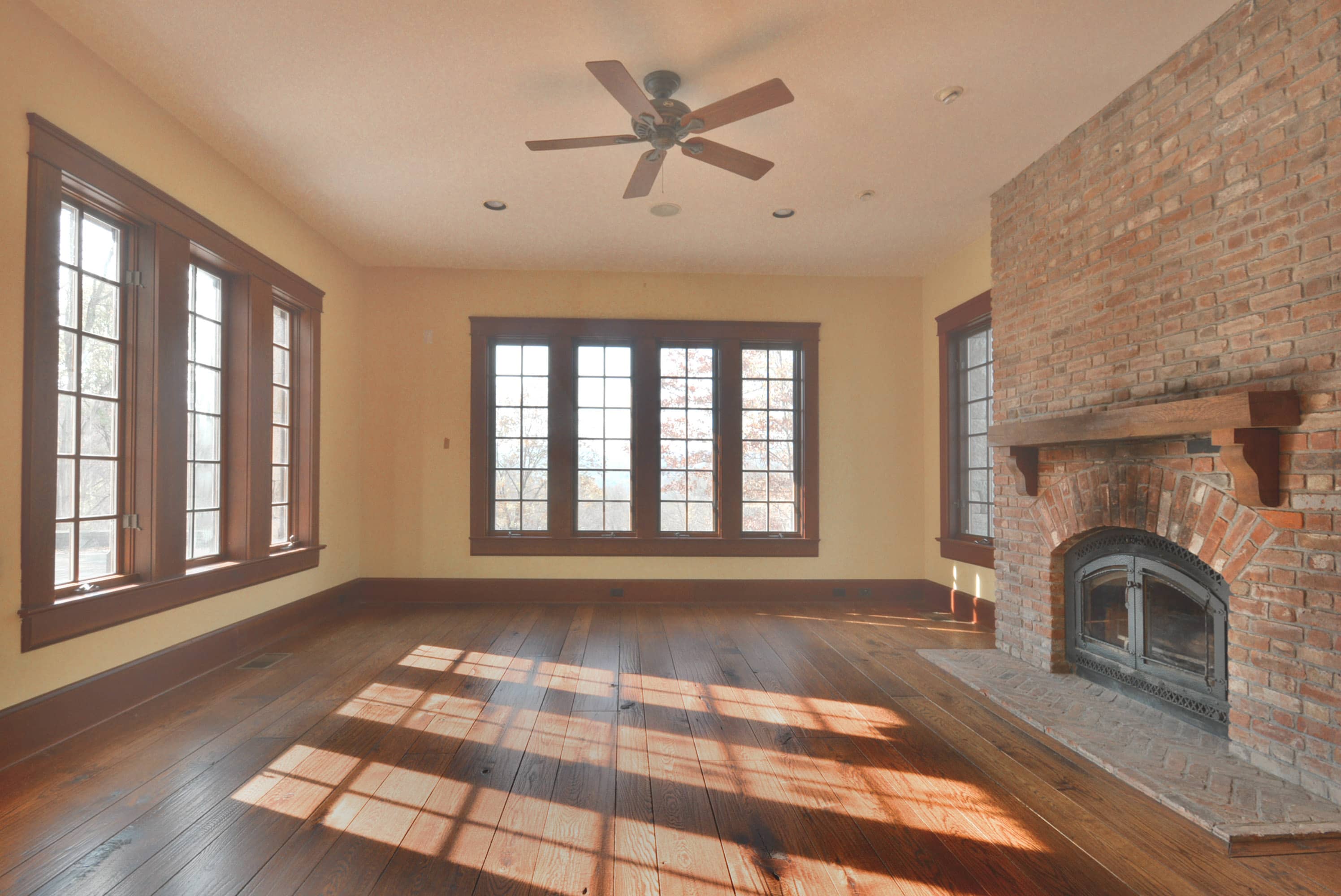
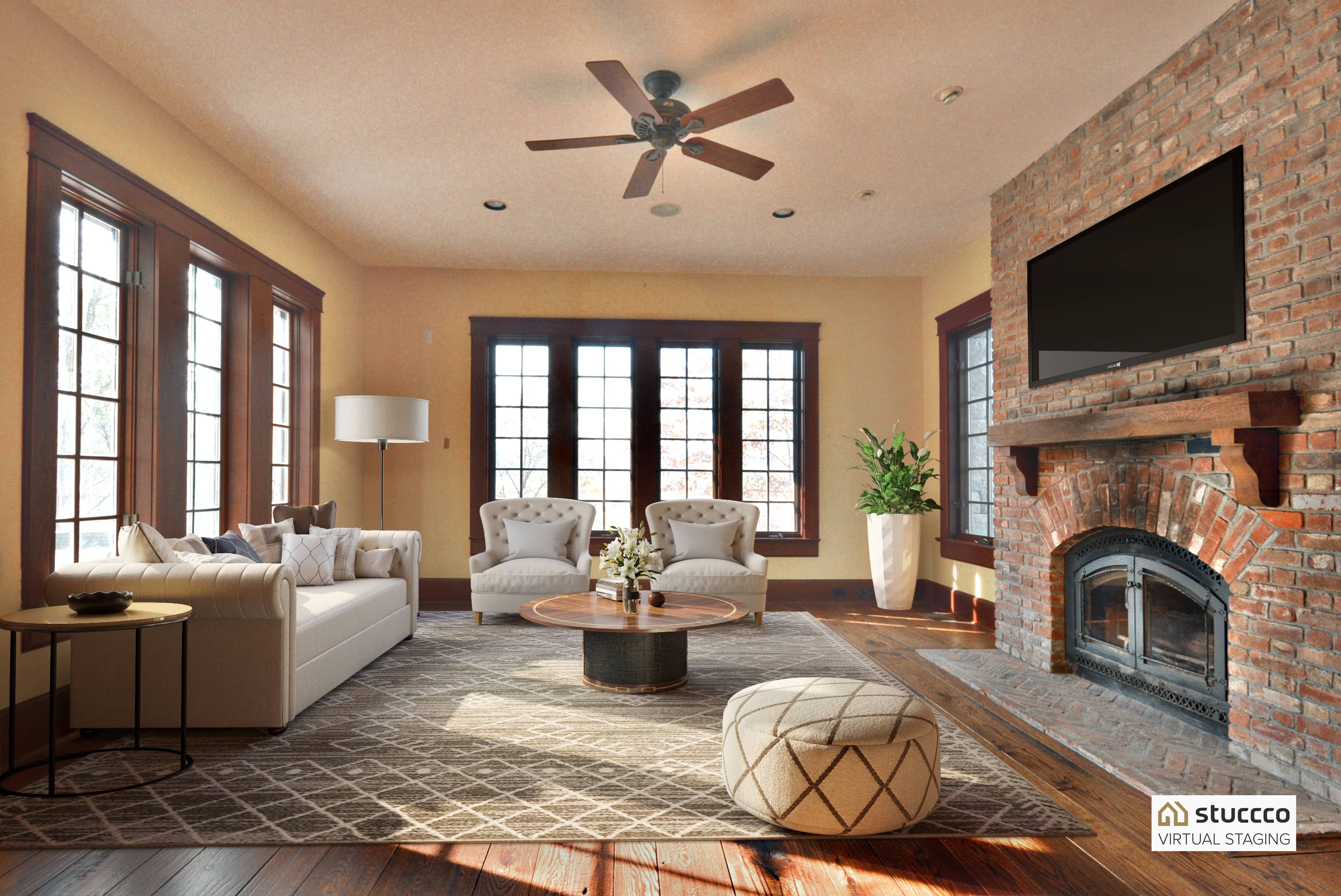
There are a few reasons why virtual staging is especially useful for vacant houses. First, it completely solves the problem of potential buyers being unable to visualize an empty room as their home. This alone can transform the sale.
The second reason is because it still allows the space to stay empty. This eliminates the chances that a potential buyer might feel misled about the house. They can see it empty in person (no rugs hiding carpet stains or furniture hiding holes!)--and they can visualize the room as their future home.
One of the best ways to use this is to actually display the virtually staged photo in the space:
Then, of course, there are all of the other benefits of virtual staging, like it's convenience, unlimited products and decor, and price.
Visit our home page to learn more about how virtual staging works.
6. Advertise the Listing
Even the most imperfect listings can be sold for the best value in the shortest period of time--it all comes down to the right marketing.
As a real estate agent, you should constantly be developing and improving your listing marketing plan to establish a system that gets you the best results. If you don't already have one, make sure you start by reading our guide and getting our free Bundle of Listing Checklists.
For vacant homes in particular, your listing marketing plan should include:
- Identifying the property's best features
- Taking high quality listing photos
- Virtually staging the property
- Writing a detailed property description
- Sharing or promoting the listing online
Consider also creating a single property website to really highlight all of the property's details and make it feel high-end. You can even generate a free single property website with your Stuccco virtual staging photos, and drive targeted traffic with the most effective real estate ads.
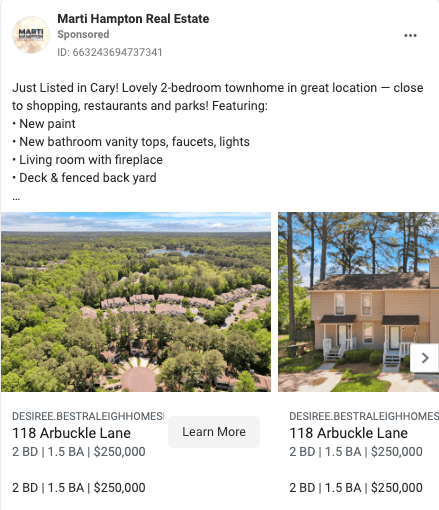
Real estate listing ad via Facebook ad library
Final Verdict: The Key to Selling an Empty House
Selling a vacant house can feel like an uphill battle, but having the right process and tools can help any real estate agent or homeowner be successful.
In fact, the overall process isn't drastically different from listing an occupied house, but your listing preparation and marketing strategies will be especially focused on helping prospective buyers feel at home.
Although there are so many ways to sell a house fast, the real key to selling a vacant house is staging. In fact, you can have your listing virtually staged by tomorrow. Discover how virtual staging transforms your vacant listing marketing today!

